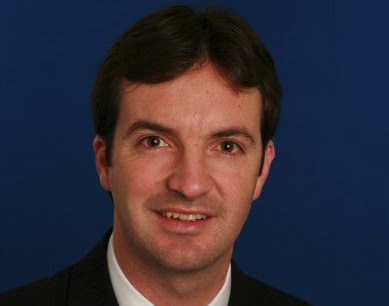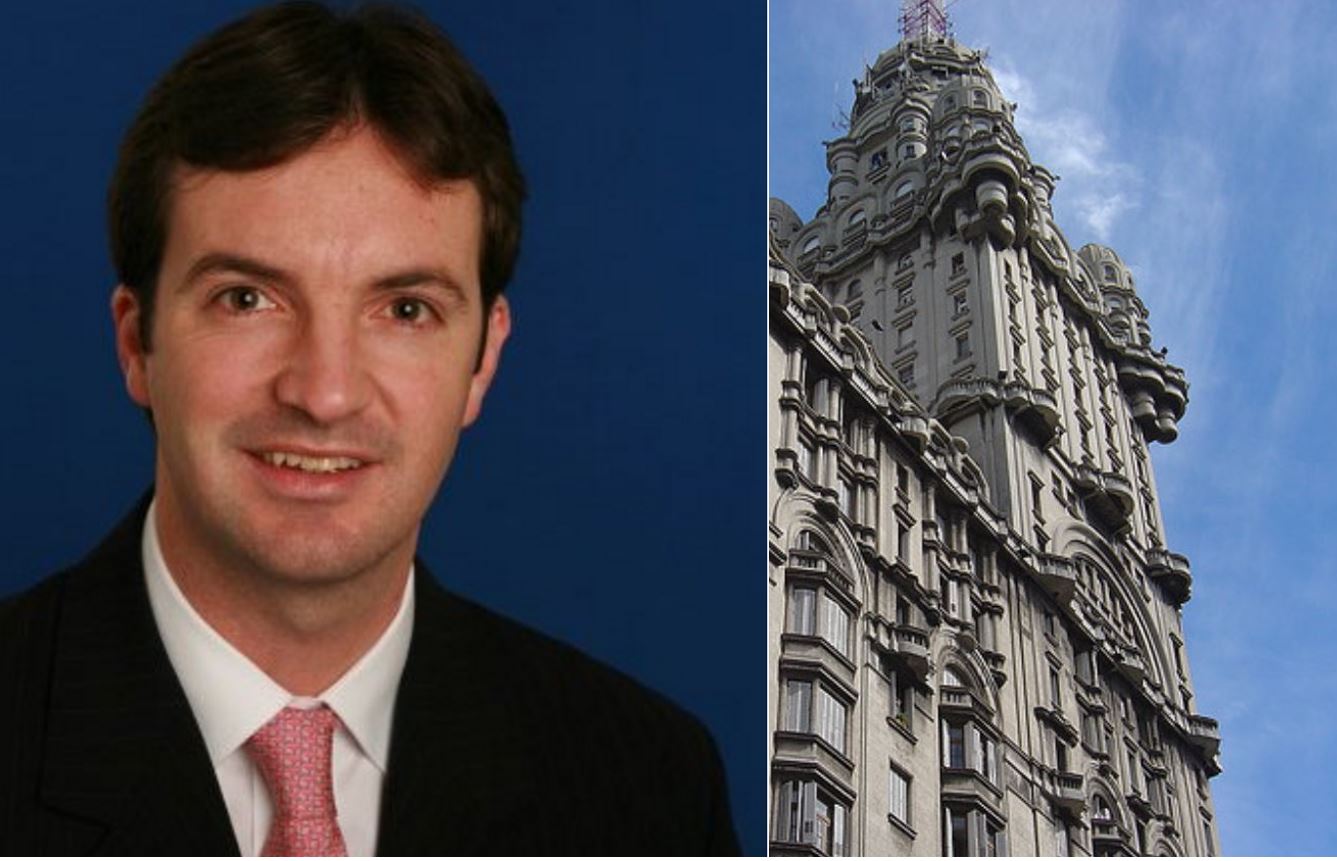Rodolfo Castilla returned to Uruguay less than a year ago, after working for several years as Global Head of Wealth Management Products and Platforms for Citi’s Consumer Bank in New York. It’s obvious that he feels at home in the lands of the River Plate, as Castilla already experienced a professionally intense stage in Montevideo, heading the International Personal Banking business (IPB US) for this same division for the Southern Cone from the Uruguayan capital since 2008.
In view of the winds of change shaking that region, the challenge facing Castilla as Head for the Wealth Management business of the Consumer Bank for LatAm’s Southern Cone, based in Citi IPB US’ offices in Uruguay, will not be any smaller. Citi’s Director met with Funds Society to discuss the future of the industry.
In the few months that you have been in Montevideo, how have you found the situation in Uruguay after five years’ absence?
My first thought is that, in terms of sales practices and the platforms that we and our competitors use, I found it relatively similar to what I left five years ago, before going to New York. And I think that all players face the risk of losing competitiveness because there are three things that are already happening in more developed markets, such as the United States or even in Asia, a region that was similar to Latin America in this dimension. Over there, business models are changing, as is the value proposition in anticipation of these changes, which, in general, I have seen happening here somewhat more slowly.
In my own personal opinion, there are three major drivers happening in our industry due to which we have the responsibility to rethink our value strategy in order to better serve our clients.
The first one is regulatory evolution at a global level, with two well defined aspects in the case of Consumer Wealth Management. The first is transparency, in portfolios as well as in investment decisions and, above all, in the costs of advising and transactionality. The example that I like to use is the difference in the allocation of portfolios for the US domestic market, where passive products have been widely surpassing asset flows very consistently in recent years. And if we look at our region, the allocation of passive products is much lower in comparison, which can be explained by many factors such as the average level of sophistication of the clients, and of bankers and advisers as well, since mathematically there are times when they are not optimizing risk / return for the client, based on the costs incurred.
That is why I think that when these regulations oriented towards total transparency in returns, risk, and costs are approved and impact our region, (and in my opinion, following the trend in other regions such as Europe, the question is when, and not if, it will happen) I believe that there are many products present today in portfolios that will no longer be the first choice, forcing the entire industry to rethink and articulate a different value proposition.
The second aspect is what is happening with the DOL in the United States for retirement accounts, referred to the concept of “Fiduciary Standard”.In general, our industry currently works broadly with a suitability standard: our obligation is that the product / portfolio that we advise a client on, appropriately corresponds with the client’s risk profile. And that is a valid model which for many years drove our industry, whose controls are also automated in most of the current platforms at the level of each transaction and of the total portfolio.
The potential new standard, a fiduciary one, proposes an evolution that, in my opinion, is more than conceptually correct, where we will have to demonstrate not only alignment with the risk profile, but also be able to demonstrate at all times that we are making the best decision for a client. So when, for example, in order to express a market view, we are facing three similar products – a basket of individual bonds, an active bond fund, or a bond ETF -, we will not only have to check whether it corresponds to the risk profile, but we’ll also have to know why we choose one option or another, including the cost / benefit ratio. Something that, again in my opinion, is absolutely healthy, since it’s in line with what we always strive for in Citi: looking for the best solution for our clients.
Are clients in Latin America really going to demand that?
I believe that those players who opt for investing in educating clients on these issues of costs, performance, risks … that we will gain an important part of the market in the future, since this is an irreversible global trend. In my opinion, this is a model that may impact the short-term financial margin, but which is undoubtedly the right one, and that whoever manages to carry out a value proposal with these elements will gain volume share because the client will eventually realize the difference in value.
And now we move on to the second driver of change, global and also regional, which has to do with the Tax Amnesties that are happening in Latin American countries. When you think of Argentina, you also think of Brazil, and on what lies ahead for Peru and on what already happened in Chile, it is a regional context but immersed in a search for transparency that is also global. Our industry is going to be even more transparent than it is today, both towards clients and Institutions, which again is very positive.
As an example of the largest offshore market in the Southern Cone, Argentina, private studies show that a large majority of Argentine savings are abroad, and we have just witnessed the largest tax amnesty in that country’s modern history. That also changes the market because this significant volume of assets adds a third player: client, banker and now the local accountant. And there is an element in the conversation that is the tax optimization of the investment strategy, very important in many markets and with different models for the different players regarding the permitted level of direct tax advice. The obvious conclusion is that we must all have a varied offer of tax efficient products in our value proposition.
Many players in the industry believe that, whatever the regulatory evolution, the weight of the local market will increase anyway: What is your opinion on that?
It will inevitably increase the local market, because governments are creating the conditions for the development of local capital markets, very healthy and also important to generate new attractive investment opportunities for clients.
In Argentina’s case, I believe that there will be an offshore and onshore mix that will enhance the value proposal. Even more so with these changes; in my opinion I believe more than ever that we must upgrade the value proposal, that in Citi’s case we open an institutional discussion based on proprietary Asset Allocation models, where there is a global investment committee sharing decision making with analysts in 4 continents, and which following all this decision making, ends in an offer with certain asset classes that optimize the return / risk / cost ratio, after which we just have to follow with the security selection of products. At Citi, we are now in a position to offer all the elements of this value chain.
I point out the difference because, for many years, our industry talked directly about products (this fund or this bonus), and that is no longer an optimal value proposition for the client. It has been widely demonstrated that individual selection of the product is 20 or 30% of the final performance, well below the correct selection of asset classes, regions, sectors, etc…
Along these lines, I think we should invest in Technology, as is already done in Asia and part of the US domestic market. We should create more intuitive platforms that allow for guiding the conversation towards understanding and solving the financial objectives of the client, instead of towards buying or selling products.
In Citi’s case in other regions, we have invested in one of those platforms that allow us to have several portfolios, one per client’s objective, each one with its risk profile and suitability controls. For example: “This is the money for my children’s university, I want to be conservative with this. And this is for my retirement, I will need it in 20 years, and I also have this 10% with which I can be more aggressive because I don’t need it in the short term and can assume greater risk”. Then, the platform allows you to build an asset location for each of these life goals, in a very intuitive way. And then comes the institutional proposal, backed by units of Due Diligence, Research, and Analysts in 4 continents calculating what the maximization of risk and return is. And, finally, it’s clearly a more efficient model also for bankers.
With these intuitive platforms, client education occurs naturally, by sitting with the client with an iPad, it is all quite simple and easy. The dialogue with the client is not based on choosing a fund or a bond but on making sure that we are fulfilling their financial objectives; that should be our common objective.
How much longer before we see this in Latin America?
While I cannot assure time-frames in Citi’s case, I can tell you that it is a global priority that is reaching our region. In the case of other important players, I do not have enough information to give my opinion about it. Our technological model at Citi is designed to complement the banker, although we think that it will never replace the banker because face to face is important, and that trust, relationship, and understanding the model and the family balance sheet will never be able to be replaced by an algorithm in certain market segments.
Are we already talking about a near- horizon in Latin America, is it possible to talk about what will happen within a ten-year period?
I reaffirm my opinion: I believe that it will be a transparent business where clients will know exactly what their objectives are, their returns, the risks assumed, what they are charged and why they are charged, in a much simpler and more intuitive way than at present.
It will be very easy to demonstrate whether the banker or adviser is doing things right or not, any client regardless of their sophistication will be able to understand that, and that will result in that only those of us who improve our value proposition will be able to maintain a leadership position.
There will be flows between onshore and offshore, with a much greater onshore allocation, because I believe in the region and believe in local markets. And if macroeconomic conditions improve, the enormous wealth generation of our countries can be channeled, instead of being consumed or absorbed by inflation. Latin America, and the Southern Cone in particular, is an area with enormous growth potential in the coming years, so whoever adjusts the value proposition faster in order to do the best for their clients, will gain a greater share of this growth.




 For Fórmate a Fondo
For Fórmate a Fondo